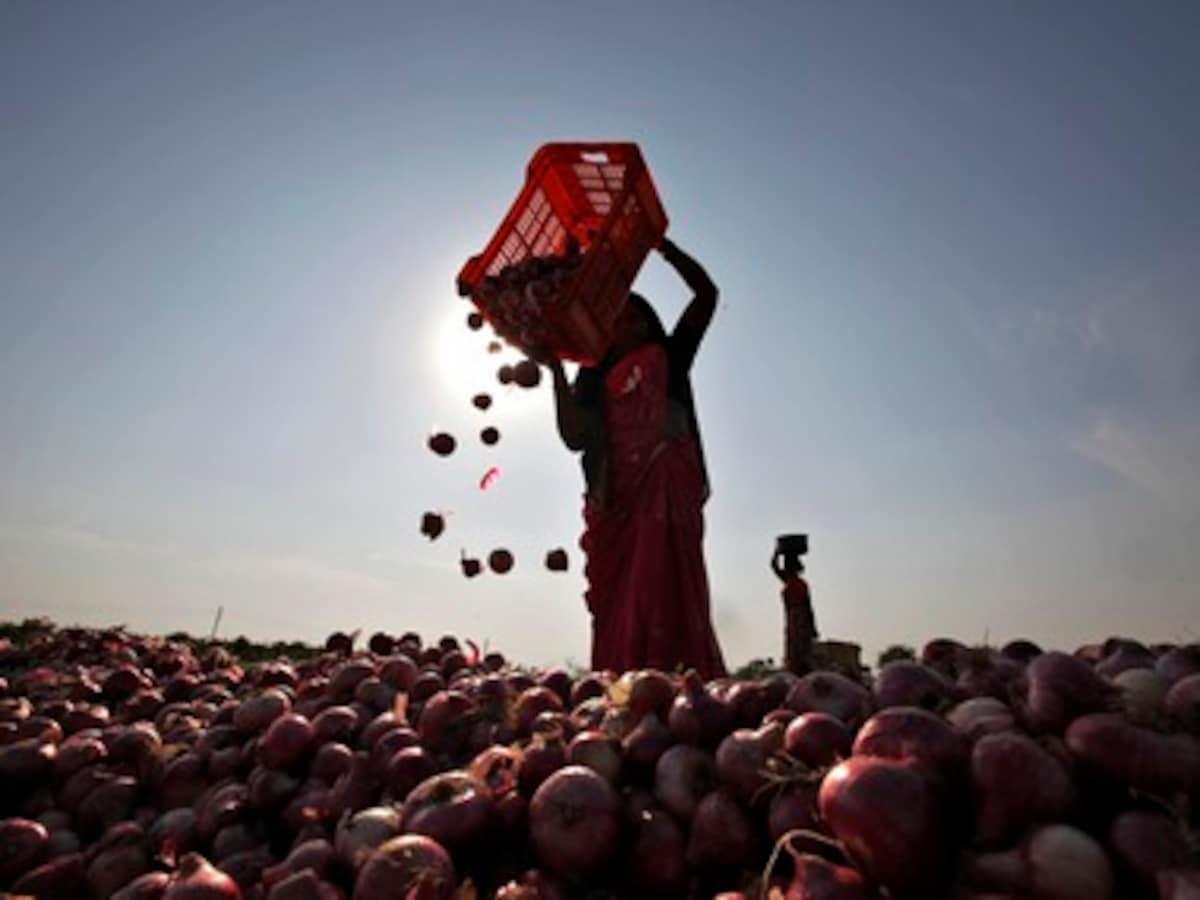Inflation in Onion Turned Positive Last Month: Onion Prices Inch Up on Sluggish Kharif Sowing 2023

Inflation in Onion Turned Positive Last Month: Onion Prices Inch Up on Sluggish Kharif Sowing 2023
According to dealers, retail onion prices have begun to increase for the first time in over two years, following tomato and spices like turmeric and jeera. This is because there have been indications of slow kharif planting due to the delayed arrival of monsoon in the central producing states of Maharashtra and Karnataka.
Onion inflation was 1.65% in June 2023 after being in negative territory since September 2021.

High moisture content in the stored rabi crops due to the unseasonal rains in Maharashtra and Karnataka in April has decreased its shelf-life, raising concerns about supply shortages by September.
On Monday, benchmark prices at Lasalgaon, Maharashtra, the country’s onion trade centre, were Rs 1350/quintal, up from Rs 1250/quintal just a fourth night earlier. The costs were about Rs 950/quintal two months ago. According to Balasaheb Misal, a former director of the Manmard (Maharashtra) mandi board and an onion farmer, “prices are expected to firm up as there is a prospect of lower kharif crops as monsoon rains have not been adequate in Nasik, Pune, and Ahmednagar districts.”
The modal retail price for onions, which had previously been set at Rs 20/kg, increased to Rs 25/kg on Tuesday, according to the department of consumer affairs.
According to Deepak Chavan, a farm sector expert based in Pune, “Kharif sowing in Maharashtra has been lagging due to late arrival of monsoon over the key growing districts, and farmers are expected to hold on to their rabi harvest anticipating higher prices.”
)
Around 65% of the nation’s onions are produced during the rabi crop’s April to June harvest, which satisfies consumer demand until the Kharif crop is harvested in October and November. Due to their more outstanding moisture content, onions harvested in the kharif season are not preserved and instead are sold right away.
According to sources, the government would likely sell the 0.3 million tonnes (MT) of onions it bought from farmers during the current rabi season on the market at an “appropriate” moment.
In contrast to the 0.2 MT of onions purchased the year before as buffer stock, the government acquired 0.25 MT in 2022–2023 for the buffer stock.
Onion output was predicted to be 31.01 MT for the crop year 2022–2023 (July–June), a slight decrease from the 31.7 MT reported the year prior. In 2020–21, kitchen bulbs produced 26.64 MT.
Unlike the last few years, the government has not prohibited the export of onions since 2021 began. In 2022–2023, India exported a record 2.5 MT of onions, a 65% increase over the prior year. India is the world’s largest producer of onions, and more than 70% of the nation’s production comes from Gujarat, Maharashtra, Madhya Pradesh, and Karnataka.

Inflation, particularly in essential commodities like onions, significantly affects the economy. A sudden surge in onion prices has been witnessed in 2023, reversing the deflation trend. This article explores the reasons for this inflation, focusing on sluggish kharif sowing during the current season and its consequences.
Onions are a staple commodity, widely used across various cuisines in many countries. A sharp increase in onion prices is often met with public outcry and has more significant implications for the overall price level of essential commodities. Recently, the inflation in onion prices has turned positive, with a noticeable increase in market prices.
The kharif sowing season is one of the two main agricultural seasons in several countries, and in 2023, it has witnessed a slower pace. Let’s explore why this is pivotal for the onion price rise.

- Delayed Monsoon and Unfavorable Weather Conditions:
The Kharif crop requires adequate rainfall, and a delay in monsoon or erratic rainfall can significantly hamper sowing. Unfavourable weather conditions in 2023 have reduced soil moisture, leading to sluggish sowing of the onion crop.
- Labor and Input Challenges:
Pandemic-related disruptions and other macroeconomic challenges have contributed to a scarcity of labour and essential inputs like seeds and fertilizers, further affecting the Kharif sowing process.
- Water Scarcity:
Cultivating water-intensive crops like onions in regions facing acute water scarcity becomes challenging, adding to the sowing delays.
The slowdown in kharif sowing has led to a supply constraint for onions and decreased market availability. As the demand remains relatively consistent, this shortage in supply pushes prices upward. Hoarding and speculation further exacerbate the issue, leading to a sharper price increase.
The inflation in onion prices impacts not just households but also has broader economic implications:
- Impact on Household Budgets: The sharp increase in onion prices strains the household budget, particularly among the lower and middle-income groups.
- Inflationary Pressures: The rise in onion prices can contribute to broader inflationary pressures in the economy, affecting other essential commodities as well.
- Policy Challenges: Governments must address this issue through timely interventions like controlling hoarding and ensuring adequate supply through imports or buffer stocks.
The inflation in onion prices in 2023, driven by sluggish kharif sowing, is a reminder of the delicately balanced agricultural ecosystem. It underscores the importance of robust agricultural planning, adequate resource allocation, and timely policy interventions.
Governments, farmers, and other stakeholders must collaborate to ensure that agricultural practices are resilient to weather fluctuations and other challenges. Efforts to increase irrigation facilities, promote sustainable farming practices, and improve market mechanisms can go a long way in stabilizing essential commodity prices, including onions. Whether these measures can be implemented effectively will be a story to watch in the coming months.





